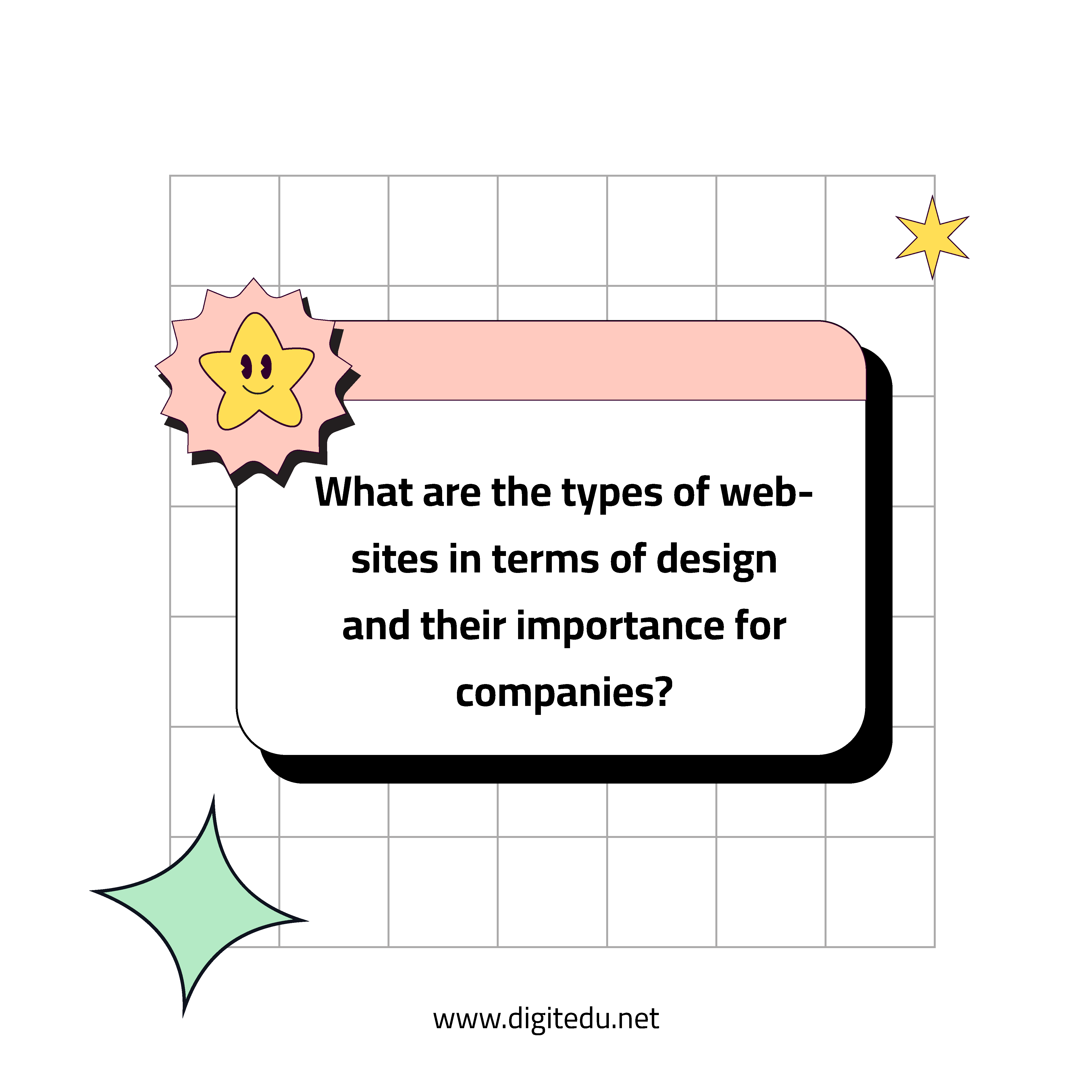In terms of design, Websites can be divided into several types based on the main purpose of the site and the type of services or content it provides. The importance of each type of these sites for companies varies according to their marketing strategy and business goals. Here are some common types of websites and their importance for businesses:
Corporate and e-commerce websites :
These sites allow businesses to sell products or services online. Ecommerce website design requires an easy and secure user experience for shoppers to increase sales and build trust with customers.
Corporate Websites :
Companies and organizations use their websites to display basic information about the company, its products, and its services. These company websites are an important marketing tool to enhance the brand and attract more potential customers.
Subscription Service Websites :
These sites regularly offer paid services such as IPTV, music, and educational content. The success of subscription services sites depends on the user experience and the quality of the content provided.
Blogs :
Blogs are used to publish cognitive and creative content in various fields such as travel, cooking, and technology. Businesses can use blogs to enhance reputation and increase audience engagement with their brand.
Educational Websites :
Educational websites provide educational and educational content on a variety of topics. Businesses can use this type of site to offer training courses or educational resources to customers and target audiences.
Each of these types of sites presents an opportunity for businesses to enhance their online presence and achieve their business goals. The importance of each type varies according to the nature of the company and its field of work. But they all offer opportunities to connect with an audience, build relationships, and increase sales.
Social media sites
Social media sites are digital platforms that enable users to interact and communicate with each other online. These platforms include a variety of applications and websites that allow individuals and companies to communicate and share content easily and effectively
Gaming sites
Gaming sites are digital platforms that provide a variety of electronic games that users can play online. These sites include a wide range of gameplay genres and styles, From simple browser games to flash games, social games and even major games on PC and mobile devices
Electronic portals
Portals are another type of website. They are platforms that provide centralized access to a set of services and information for a specific category of users. Portals include a variety of content and tools that help users access information and manage their activities centrally. Electronic portals vary greatly in areas of use and content. Examples include:
- Intranet Portals :
- These portals are used within organizations and companies to provide employees with centralized access to a range of tools and information such as internal email, documents, administrative systems, And others.
- E-learning portals (Learning Management Systems – LMS) :
- These portals provide a range of online educational tools and resources, such as electronic lectures, Interactive exercises, discussions, and tests, To facilitate distance learning and management of training courses.
- Customer Portals :
- These portals provide customers with centralized access to company services such as invoicing, track orders, Technical support, etc. Which facilitates the interaction process between the company and customers.
- Government Portals :
- These portals provide centralized access to citizens to various government services such as registration, Payment of fees, Submitting applications, And access to government information.
- News Portals :
- These portals collect a collection of articles and news from multiple sources in different fields such as politics, economics, sports, technology, To provide a single source for users to follow current events.
Electronic portals are an important tool for providing a centralized and easy-to-access experience for users of various information and services. Whether within organizations, for clients, or for the general public. It helps improve work efficiency and enhances communication and interaction between different parties.
What is the importance of websites?
Websites are of great importance in the current era. This is for several reasons:
- The company’s digital interface : Websites are considered the company’s digital interface or digital identity on the Internet. It represents your digital presence and reflects the products and services you offer and your business vision.
- Increased reach and global presence : Websites enable businesses to reach a global audience faster and more effectively. Individuals and potential customers can easily find information about the company and its products online.
- Marketing products and services : Websites enable companies to promote their products and services online through advertisements, blogs, and creative content, which contributes to increasing sales and attracting more customers.
- Improving customer experience : Through websites, companies can provide a distinctive and seamless user experience for customers, including online customer services, and providing useful and interactive content.
- Saving time and effort : Websites are an effective and flexible way to provide information and services, as customers can access them at any time and from anywhere without the need to wait or contact directly.
- Performance monitoring and data analysis : Websites allow companies to monitor and analyze site performance and customer behavior through data analysis tools, which helps improve marketing strategies and improve user experience.
Briefly, Websites are an essential tool for companies in the modern era. It provides a digital interface to interact with customers, enhances accessibility, and facilitates effective communication and marketing.
What are the types of website files?
There are several types of files that are used to create and run websites. Each of these types of files has a specific role in playing and displaying content and interacting with users. Here are some common website file types:
- HTML files (HyperText Markup Language) :
- Used to build the structure and format of web pages. HTML files contain basic elements such as text, links, images, tables, and forms.
- CSS files (Cascading Style Sheets) :
- Used to format and design web pages built with HTML. CSS files contain instructions that control the appearance of elements such as colors, fonts, margins, and formatting of a layout.
- JavaScript files :
- Used to add interactivity and dynamism to web pages. JavaScript files make it possible to create live effects, and control user events and interactions, And perform complex operations on the front end.
- Image Files :
- Includes image files such as PNG, JPEG, and GIF, It is used to display images and graphics on web pages.
- Video and Audio Files :
- Used to embed video and audio clips on web pages, Allowing for an interactive experience and rich content for users.
- Stylesheets :
- Used to define CSS styles associated with a specific web page, Organize and manage website designs more effectively.
- Service files (Server-side Files) :
- Includes files such as PHP, ASP, etc., It is used to run and manage dynamic jobs on the server, Such as retrieving data from databases and generating web pages based on request.
These are some of the main types of website files. These files need to be used in an integrated manner to create websites that are effective, consistent, and useful to users.


